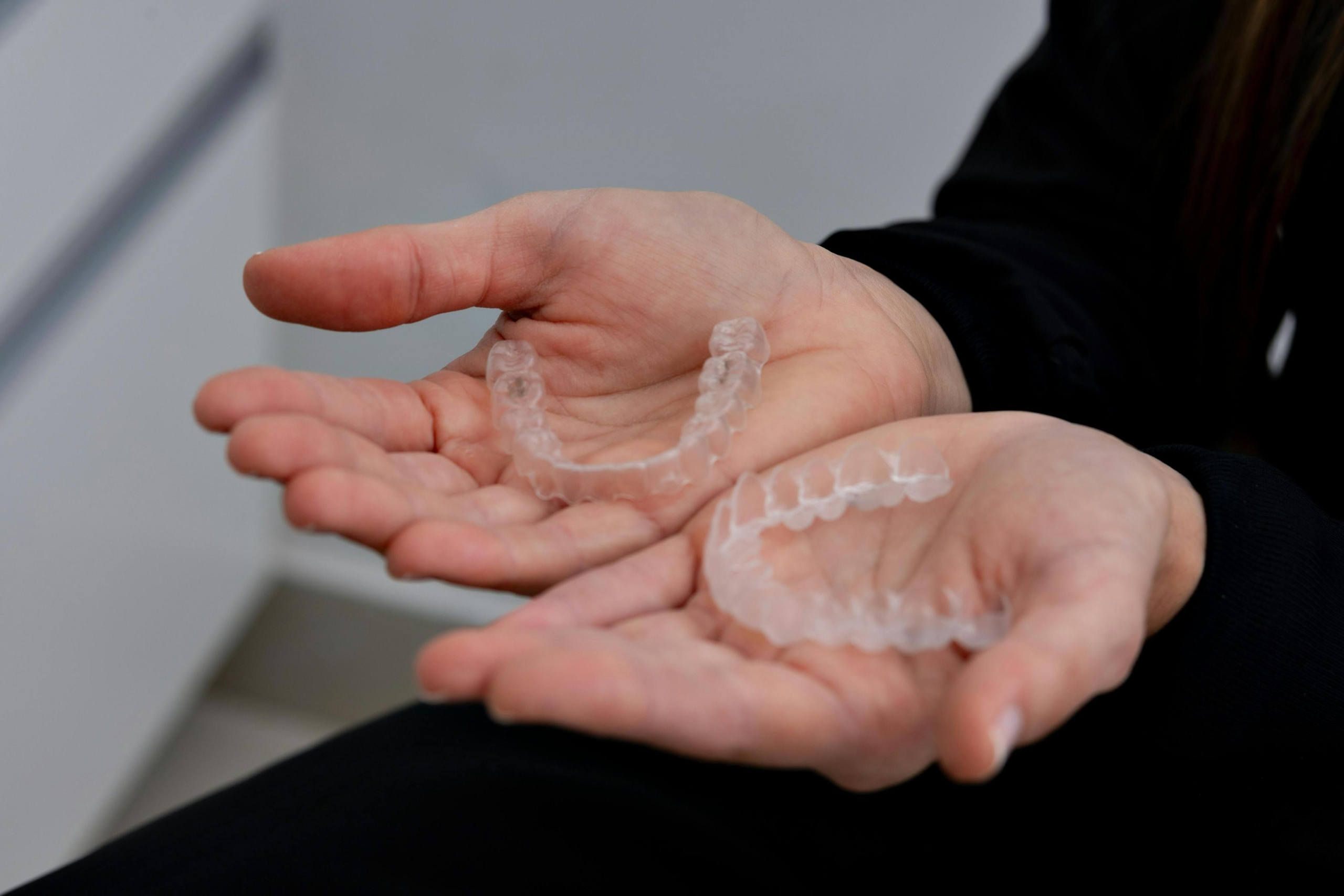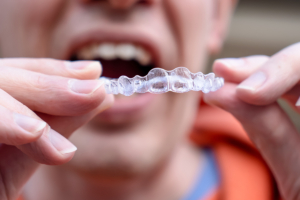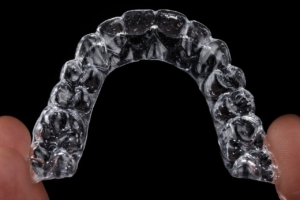Invisalign 101 is all about achieving a straighter smile with clear aligners. They’re convenient, discreet, and effective. But like any orthodontic treatment, issues can arise. A broken or lost aligner can disrupt progress if not handled the right way.
If you’re undergoing Invisalign in Newcastle, knowing what to do in these situations can prevent delays. Quick action can also help avoid discomfort or setbacks. Discover the steps to take when aligners break or go missing.
What to Do If You Break Your Invisalign Aligners
Clear aligners are designed to be durable. But they’re not indestructible. Accidents happen, and a cracked or broken tray can affect treatment. The next steps depend on the severity of the damage.
Common Causes of Broken Aligners
- Chewing on hard foods or biting down too forcefully
- Dropping aligners on hard surfaces
- Storing them improperly or exposing them to heat
- Using too much pressure when inserting or removing
Immediate Steps to Take
- Check the Damage – Look for cracks or breaks. Small fractures might not be an issue, but a fully broken tray needs attention.
- Determine If It’s Wearable – If the damage is minor and doesn’t cause discomfort, the aligner may still be usable temporarily.
- Avoid Using Harmful Aligners – Sharp edges from a break can irritate gums or the inside of the mouth. If this happens, stop using the tray.
Next Steps Based on the Severity
- Minor Crack: If the aligner still fits well and doesn’t cause irritation, continue using it until a replacement arrives.
- Significant Break: If the tray is split or has sharp edges, stop wearing it. Contact your orthodontist for guidance.
- Completely Unusable: Do not try to fix it. Using a broken aligner incorrectly can disrupt tooth movement.
When to Contact Your Orthodontist
- The aligner is split in half or doesn’t fit properly.
- The break is causing pain or irritation.
- You’re unsure how long you’ll need a replacement.
Acting quickly helps keep treatment on track. If the aligner is unusable, calling your provider as soon as possible is the best step forward.
What to Do If You Lose Your Invisalign Aligners
Losing an aligner can be frustrating. Skipping too many days without wearing one can cause teeth to shift. The longer the gap, the harder it may be to get back on track. Taking quick action can help prevent delays in treatment.
Common Reasons Aligners Get Lost
- Accidentally thrown away while wrapped in a napkin
- Left behind in a restaurant, school, or public place
- Misplaced while traveling or staying overnight somewhere
- Not stored in the case after removal
Immediate Steps to Take
- Retrace Your Steps – Check common places where the aligner may have been left. Look in pockets, bags, or any surfaces where it was last seen.
- Use the Previous Aligner – If the current set is missing, wearing the last one can help prevent shifting while waiting for a replacement.
- Call Your Orthodontist – A new aligner may need to be ordered. In some cases, moving to the next set might be an option.
What Happens If You Go Too Long Without an Aligner?
- Teeth may begin shifting back, affecting progress.
- The next set of aligners might not fit properly.
- Additional time could be added to treatment.
How to Prevent Losing Aligners
- Always Use the Case – Placing aligners in a napkin or on a table increases the risk of losing them.
- Set a Reminder – A quick alarm on a phone can help remember to put them back in after eating.
- Have a Backup Case – Keeping an extra case in a bag, car, or work desk can prevent accidental misplacement.
Losing an aligner isn’t the end of treatment, but quick action makes a difference. Keeping a spare case and following storage habits can help avoid future mishaps.
Should You Skip Ahead to the Next Set of Aligners?
Skipping ahead to the next set might seem like a simple solution. But moving forward too soon can cause discomfort or affect treatment progress. It’s important to know when this is an option and when to wait for a replacement.
When It’s Okay to Move to the Next Set
- The next aligner is due to be worn within a few days.
- The current set was worn as prescribed and teeth have adjusted.
- Your orthodontist confirms that skipping ahead won’t impact progress.
When It’s Not Recommended
- The current set was only worn for a short time.
- The next aligner feels too tight or doesn’t fit properly.
- Shifting too soon could cause pain or incorrect movement.
Why Checking with Your Orthodontist is Important
- Ensures that moving to the next set won’t affect alignment.
- Prevents unnecessary discomfort from an ill-fitting tray.
- Helps decide if a replacement aligner is needed instead.
Rushing ahead can sometimes do more harm than good. Checking with a professional before making the switch is always the best choice.
How to Prevent Future Invisalign Emergencies
Taking care of aligners properly reduces the risk of breaks or loss. Simple habits can help keep treatment on schedule and avoid unnecessary replacements.
Storage and Handling Best Practices
- Always Use the Case – Placing aligners in a napkin or loose in a bag increases the chance of losing or damaging them.
- Handle with Care – Avoid bending, twisting, or applying too much pressure when inserting or removing trays.
- Keep Away from Heat – Leaving aligners in a hot car or near direct sunlight can cause warping.
Travel Tips for Invisalign Users
- Carry an Extra Set – Having a previous aligner on hand can help in case of loss or damage.
- Pack a Travel Cleaning Kit – A portable case, cleaning solution, and a soft brush keep aligners clean and protected.
- Set a Reminder – Using a phone alarm can prevent accidentally leaving aligners behind at restaurants or hotels.
Regular Check-Ins with Your Orthodontist
- Attend All Scheduled Appointments – Regular visits help monitor progress and address any issues early.
- Report Any Fit Issues – If an aligner feels too loose, tight, or uncomfortable, contacting the orthodontist can prevent bigger problems.
- Ask About Emergency Replacements – Knowing the process for getting a new aligner quickly can help if one is lost or broken.
Good habits make Invisalign treatment easier and more effective. Keeping aligners safe, handling them correctly, and staying in touch with the orthodontist can help prevent setbacks.
Conclusion: Stay Prepared for Any Invisalign Emergency
Broken or lost aligners can feel like a setback, but quick action can prevent major disruptions. Knowing how to handle these situations ensures that treatment stays on track.
Key Takeaways
- Broken Aligners: Assess the damage, avoid using sharp or split trays, and contact the orthodontist for a replacement.
- Lost Aligners: Use the previous set if possible, call for a replacement, and avoid skipping days to prevent shifting.
- Skipping Ahead: Only move to the next set if an orthodontist confirms it’s safe.
- Preventing Emergencies: Store aligners properly, avoid damaging them, and keep up with regular check-ins.
Keeping an extra case, handling aligners carefully, and having a plan for emergencies can make the Invisalign process smoother. If an issue arises, reaching out to an orthodontist quickly is always the best approach.



